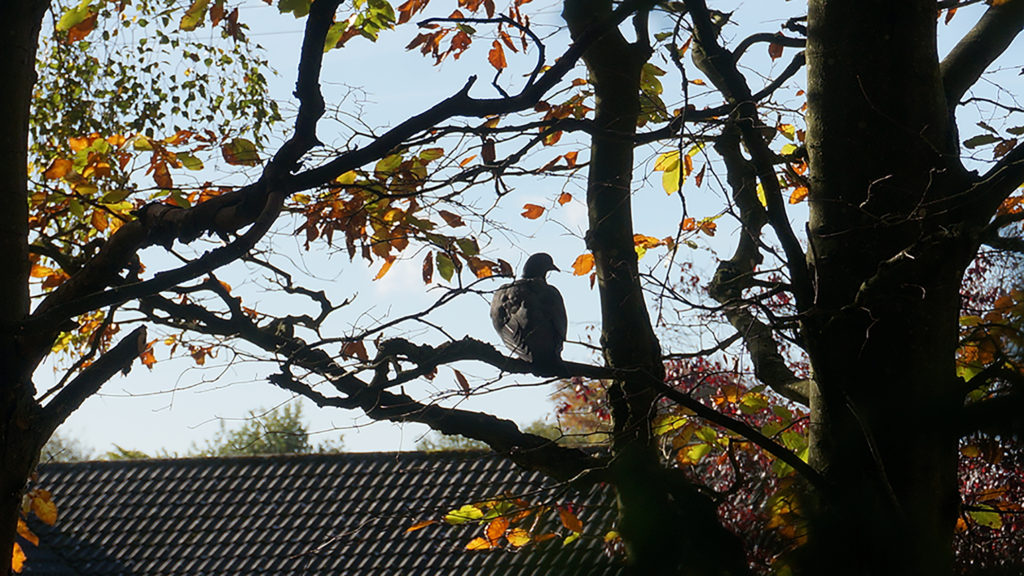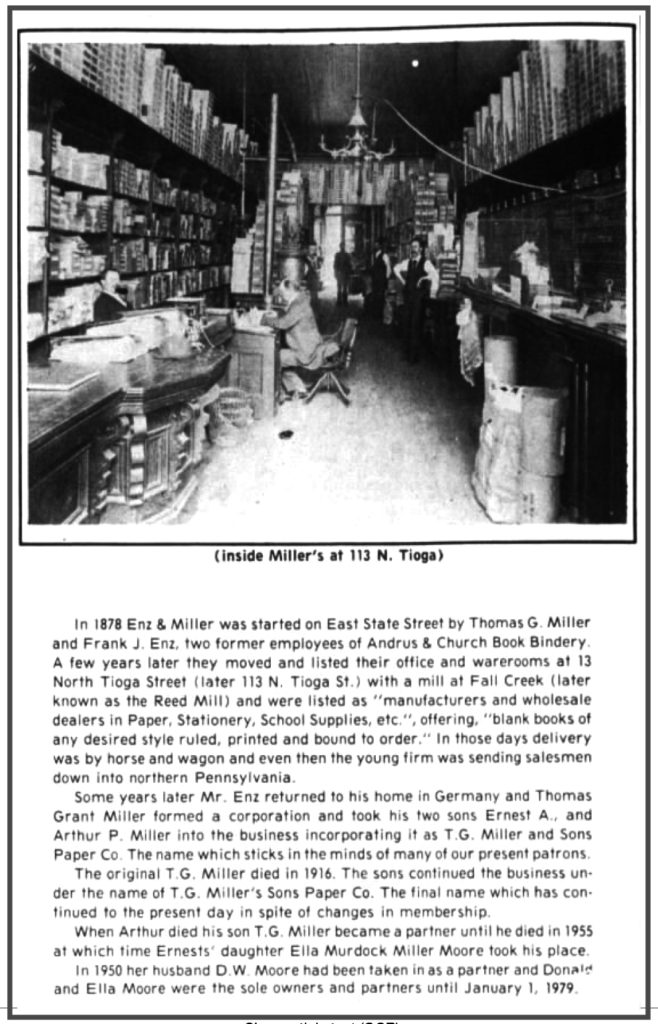On news, trees & sustainability
Many years ago, when I lived in downtown Ithaca within walking distance of the Commons, I had a Sunday morning ritual of walking to a place (alas, wonderful but short-lived) called Muffin Madness. On my way there I would pick up a Sunday New York Times from T.G. Miller Son’s Paper Company (gone after many, many years – see info. bottom of page). After ordering a pecan sticky bun and a coffee, I would settle in at a window-view table, looking onto the corner of Aurora Street and State Street (now dually designated as Martin Luther King Jr. Street) and read the Times end to end – which took about as much time as eating one of Muffin Madness’ rich and irresistible sticky buns.
I was reminded of my previous Sunday morning ritual when I became aware that I had missed the NYT’s brief period of free online (if I had seen this Sunday, I would have ran for a sticky bun). Many local papers have managed to keep their online (and in many cases print) content free and available to all. (This includes the Owl Light News). Many other newspapers now have pay walls, annoying pop up ads – or both. I did open and read a “cheery” NYT’s article (relevant to this issue’s focus) on the acceleration of the global extinction of plants and animals and the increasingly obvious link between the extinction of other species and our potential for long-term survival (www.nytimes.com/2019/05/06/climate/biodiversity-extinction-united-nations.html). The article was, coincidentally, sponsored by an advertisement for a million dollar pent house. Newspapers need advertisers.
I am sometimes asked if I would accept more advertising from corporations. I guess my short answer, I am not very good with short answers, is yes. Although in reality it would depend on the corporation: how do they treat their employees; whether their service or product supports the environment; what becomes of their wealth? It is a delicate balance to keep advertising rates low enough to encourage and support small business and nonprofit service organizations while encouraging wealthier advertisers and remaining a sustainable press. I do understand why the Times and many other mainstream – and less mainstream – newspapers do what they do. Carl Sagan’s quote, “Extinction is the rule. Survival is the exception.” applies, sadly, as much to newspapers as it does to life here, or anywhere.

As media discussions continue around who gets access to what news, and for how much (free press!), around paper (which is expensive) vs. digital, environmental sustainability is as relevant as economic sustainability. Although our delivery goal is that all the Owl Lights get picked up and read, they ultimately get upcycled into flowerpots or worm bedding, recycled (to where and to what ends?) or, worse yet, thrown out. Paper is still made primarily from trees, and, as I often say, “they don’t make trees like they used to.” When I pick up a copy of the Sunday New York Times to read I wonder just how many trees it takes to print all those pages. (It also takes fossil fuel to bring the Times to my door). Nonetheless, I have decided that print is an important choice for our Owl Light readers and that online content – like the print copy – should be available to all.
As for my Sunday New York Times quandary I do love that morning ritual of consuming the paper slowly, in a way that is only possible with print. Despite recent criticism (some warranted; some vindictive) the Times has long been recognized as a “newspaper of record,” and continues to provide more in-depth coverage than most – if not all – U.S. press sources (my current global news “go to” is the BBC). A digital option looks like just the thing, allowing me to support independent press and the environment. Besides, the availability of pecan sticky buns in Canadice on Sunday morning is nil.
D.E. Bentley ~ Editor Owl Light News

